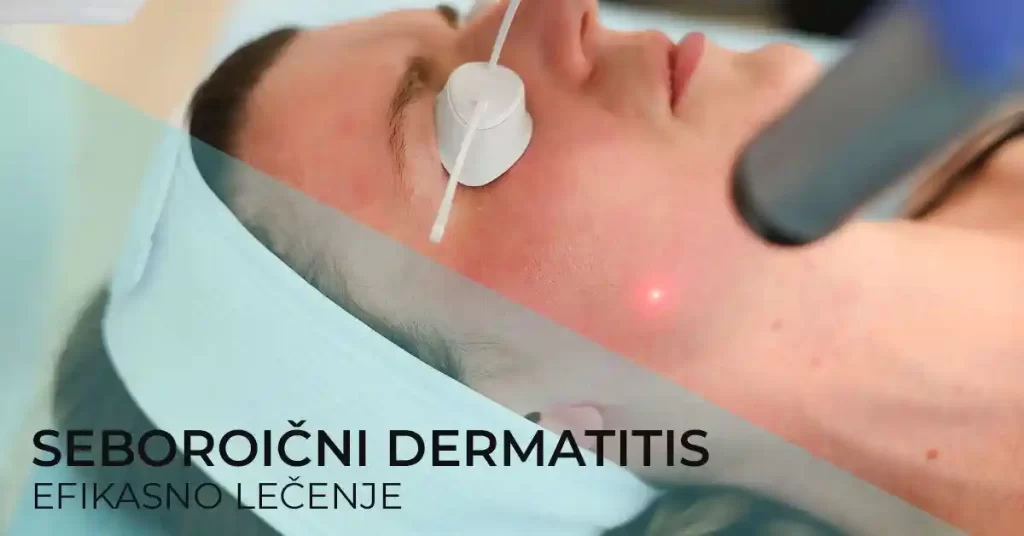Seborrheic dermatitis - treatment
A dermatologist makes a diagnosis based on the clinical picture. Seborrheic dermatitis can be kept under control with adequate hygiene and skin care using appropriate preparations. But also skin treatments prescribed by dermatologists.
Antimycotics and topical preparations based on corticosteroids can be used during therapy. And an adequate choice of medical cosmetics is very important.

Seborrheic dermatitis laser treatment - FREE consultation at Diva Polyclinic
You can schedule a FREE consultation for the procedure for the laser treatment of seborrheic dermatitis in Belgrade, Novi Beograd or Vračar with the doctors of the polyclinic Diva Dr. Bogdanović in one of our polyclinics or specialist dermatology offices:
When are the results of seborrheic dermatitis laser treatment visible?
The results are already visible after 3 treatments, and the exact number of them is determined by the specialist doctor during the examination, depending on the severity of the disease. It is recommended to repeat the treatment once every 2 years.
Seborrheic dermatitis - symptoms
- secondary bacterial infections
- humidification and
- the appearance of sores and scabs.
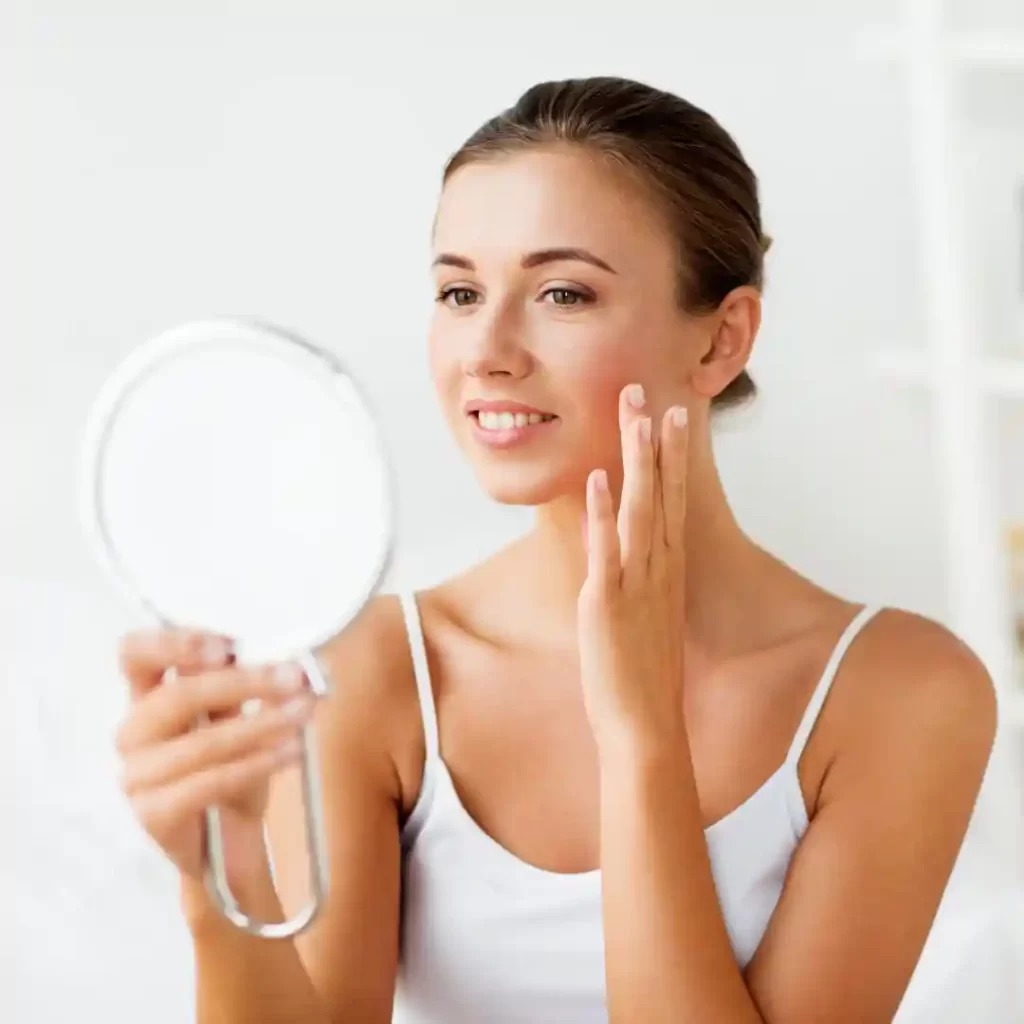
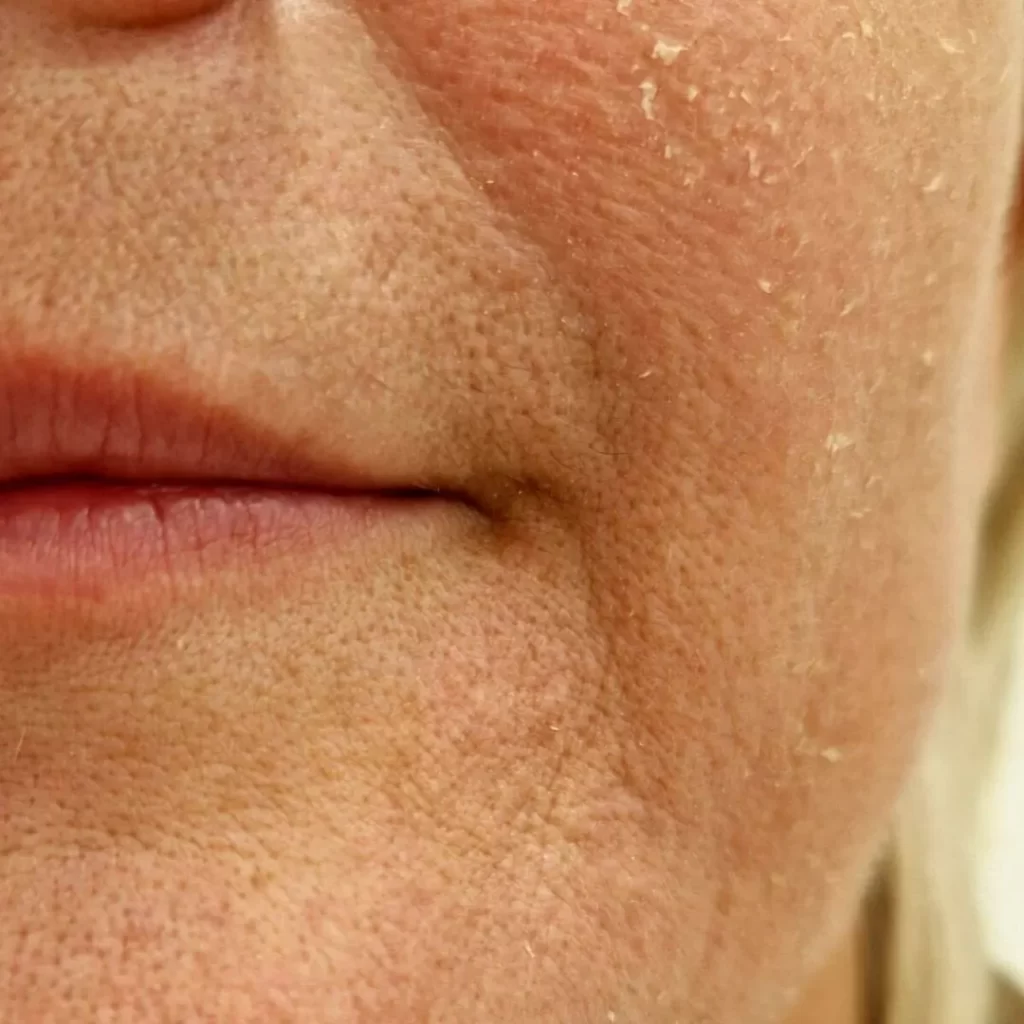
Seborrheic dermatitis on the face
When it appears on the face, the fat zones are mostly affected, i.e. places rich in sebaceous glands. This means the area around the nose, the region of the nostrils, around the nasolabial folds, in the area between the eyebrows, but also on the outside of the ear canals.
This skin disease causes an inflammatory condition that often spreads to the scalp and causes dandruff.
Seborrheic dermatitis on the head
If it appears in the head area, the flaking of the scalp is visible, and the hair quickly becomes greasy, sometimes already a day or two after washing.
In the area of the scalp, it can appear in 2 forms, which can be combined:
- like small dandruff or
- as flakes (which can be greasy and yellowish).
It is also possible for it to spread beyond the hairline, towards the forehead.
Seborrheic dermatitis elsewhere on the body
Just like the scalp, other hairy areas can also be affected by this type of dermatitis. It can also appear around the edges of the eyelids – which can lead to conjunctivitis, or inflammation of the eyelids.
In men, it can occur in the area of the chin or chest.
In whom does seborrheic dermatitis occur?
In a large number of cases, it occurs in the third and fourth decade of life, more often in men than in women.
The appearance of this coloration is also possible in infants (usually in the tenth week of life) – and it is known by the name of chroma. It is a temporary skin condition that resolves by the age of three.
Seborrhea is also associated with the period of adolescence, when sudden hormonal changes occur.
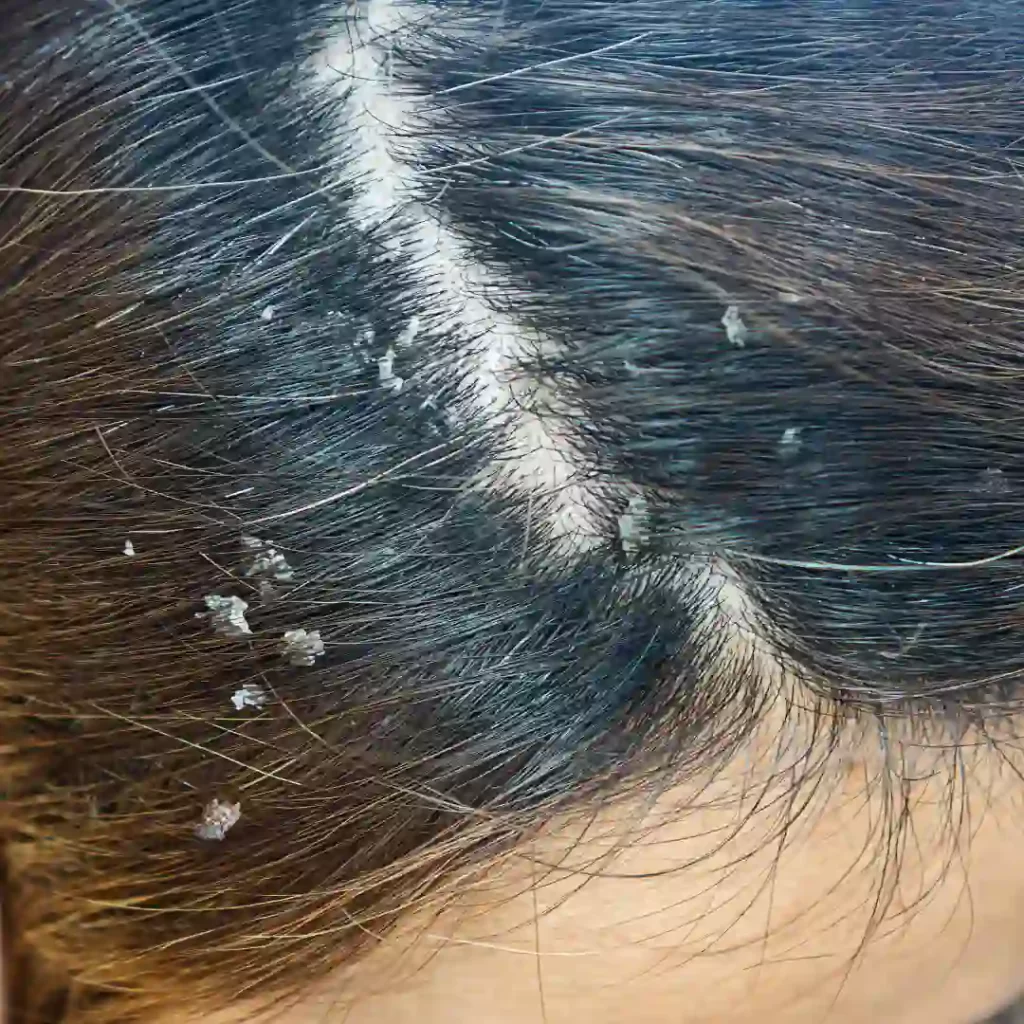
Seborrhea usually affects:
- scalp,
- face (eyebrows, cheeks, nose, chin, sometimes eyelids),
- ear area,
- the upper part of the décolleté zone and
- back,
- and rarely it can appear within the axilla and
- elbow region, as well as
- in the area of the fossa on the back of the knee.
Seborrheic dermatitis - causes
Seborrheic dermatitis is a hereditary disorder of the sebaceous glands that causes increased secretion of sebum, while at the same time shortening the process of cell renewal of the scalp. As a result, there is an accelerated exfoliation of keratinized skin cells. However, in addition to hereditary factors, the occurrence of seborrhea is also influenced by:
- hormonal changes,
- stress,
- immunological disorders,
- diet (fatty and very spicy food and alcohol),
- change in skin pH,
- as well as skin irritations (physical or under the influence of microorganisms).
A significant role in the occurrence of seborrheic dermatitis is also played by the fungus Pityrosporum ovale, which is normally found on the skin.
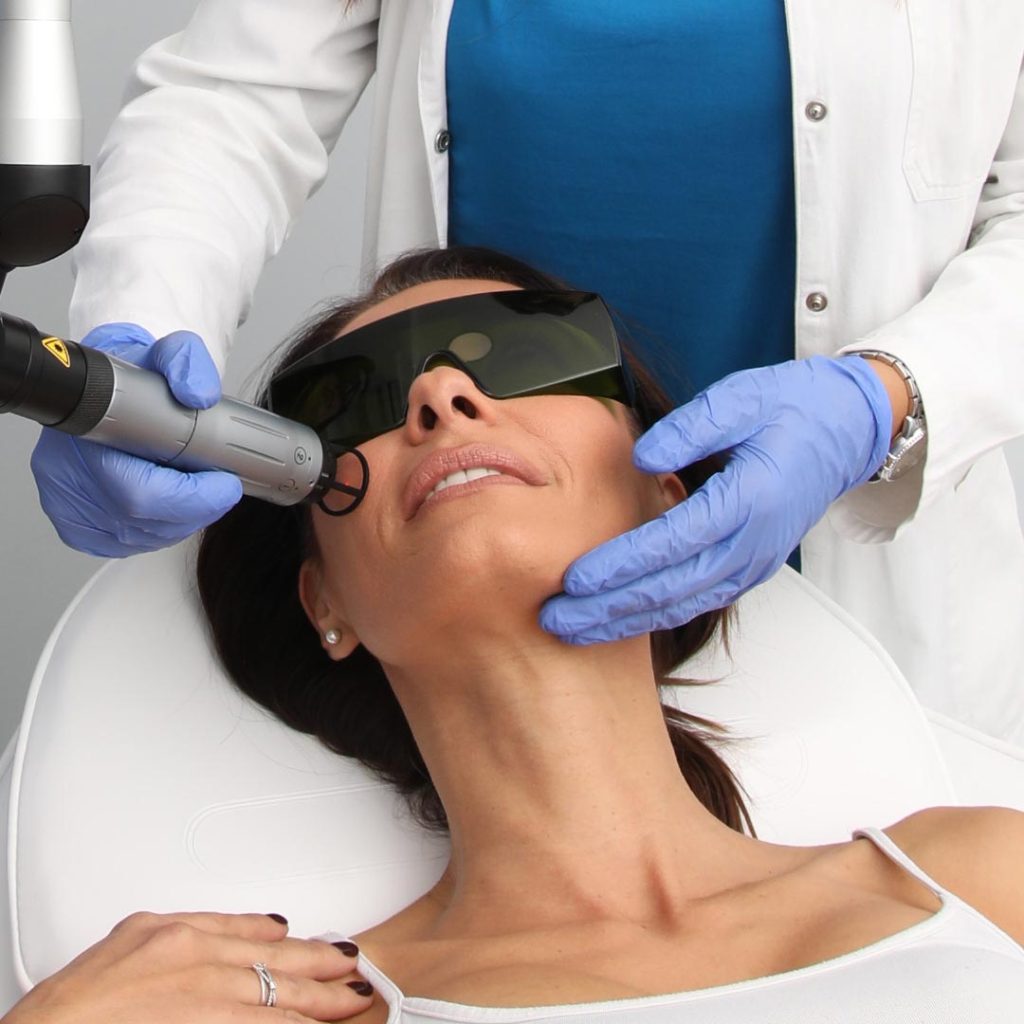
What affects the worsening of seborrheic dermatitis?
In whom does seborrheic dermatitis occur?
- stress,
- fatigue and exhaustion,
- extreme weather conditions (extremely high and low temperatures, wind),
- using inappropriate shampoos, shower gels and soaps.
Since it is a chronic skin disease, it occurs in episodes. That is why periods of improvement and worsening of symptoms alternate. And with proper and regular application of adequate therapy, this skin condition can be regulated and kept under control throughout life.
The seasons can also determine the rhythm of the inflammatory process. That is why the condition often worsens during the colder period of the year.
Laser treatment of seborrheic dermatitis - price:
The cost of treating seborrheic dermatitis with the Lumecca or D Light laser at the Diva Polyclinic is from 120 to 180 euros in dinar equivalents and depends on the size of the region being treated. For prices of other services, see our PRICE LIST.
NOTE:
Whether this procedure is the right choice for a certain type and condition of the skin will be assessed by a specialist doctor during a free consultation, and accordingly propose an adequate procedure. How many treatments are needed is individual and depends on several factors.
The results of the procedure may vary from patient to patient, and this is influenced by many factors including genetics and lifestyle of each individual.
You can read the entire disclaimer HERE.
Appointment for a free consultation for the treatment procedure of seborrheic dermatitis with a laser in Belgrade
At the polyclinic Diva Dr. Bogdanović Belgrade, with our doctors specializing in dermatology and aesthetic surgery, you can schedule a FREE consultation for a pre-procedure examination for the laser treatment of seborrheic dermatitis in one of our polyclinics or specialist dermatology offices:
to one of the phone numbers 063 338 334 or 011 3242 841 or to the email info@divaclinic.com
Our specialist doctors will tell you during the examination what kind of results you can expect after this procedure.
You can schedule an examination or procedure
· every working day from 9 a.m. to 8 p.m
· and on Saturdays from 9 a.m. to 3 p.m.

